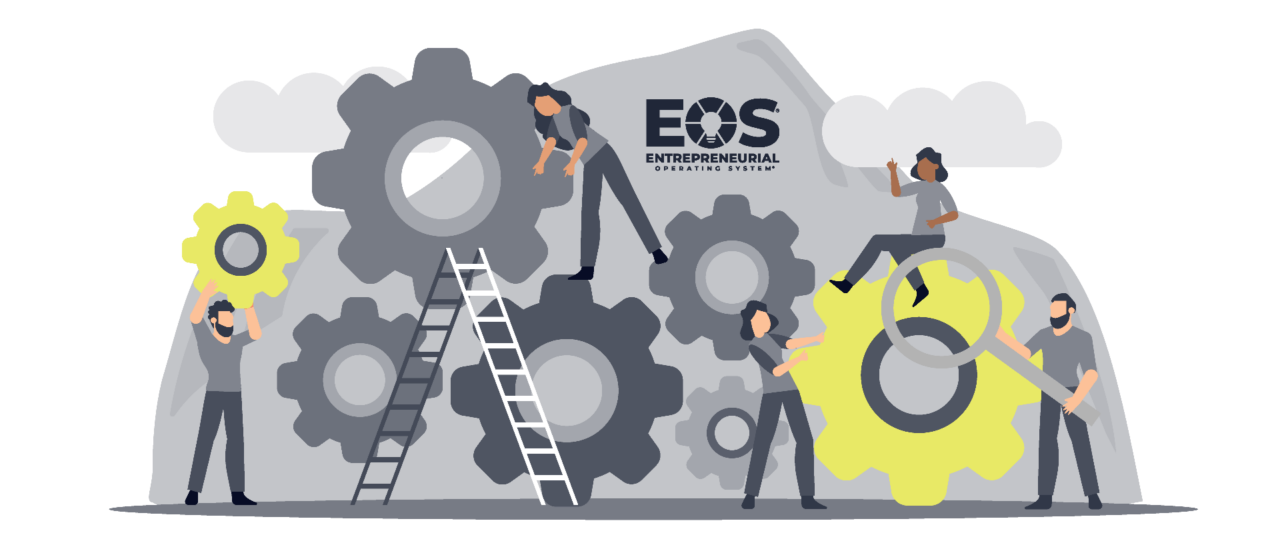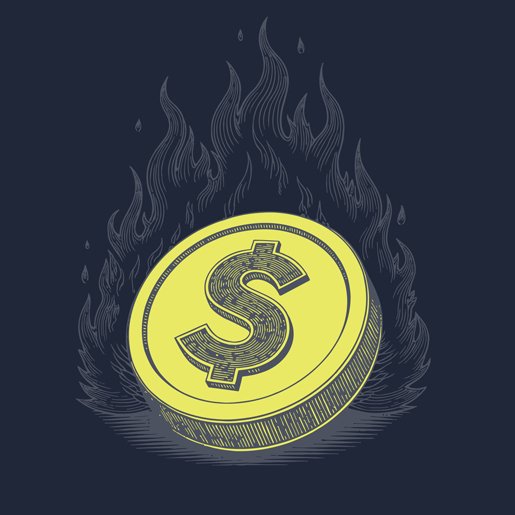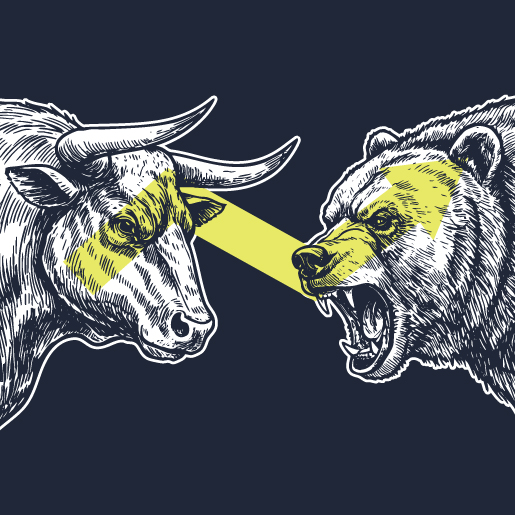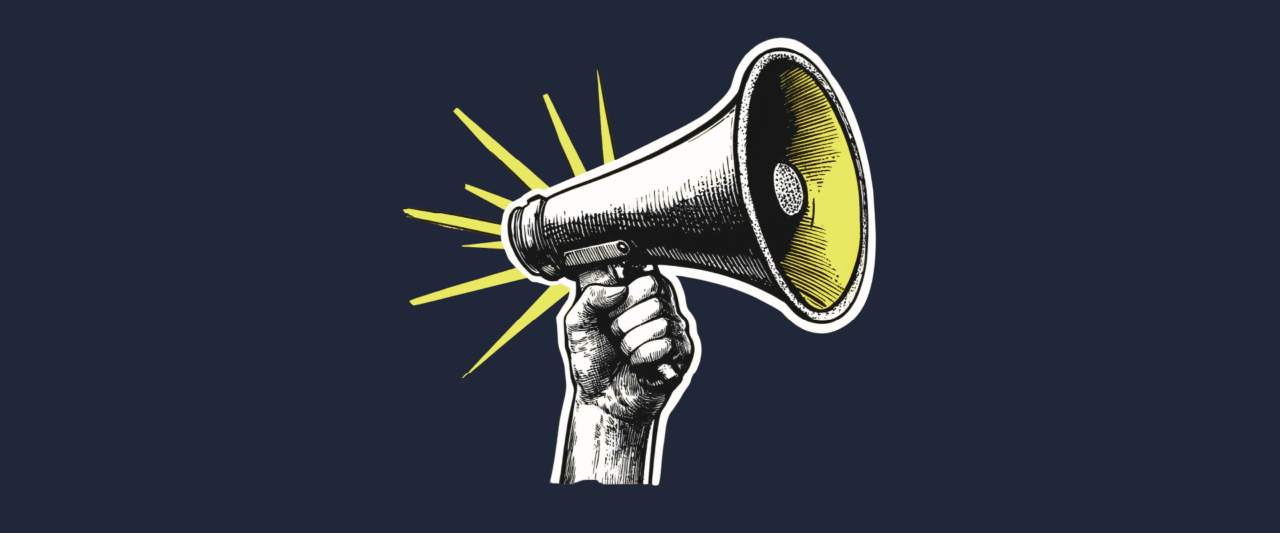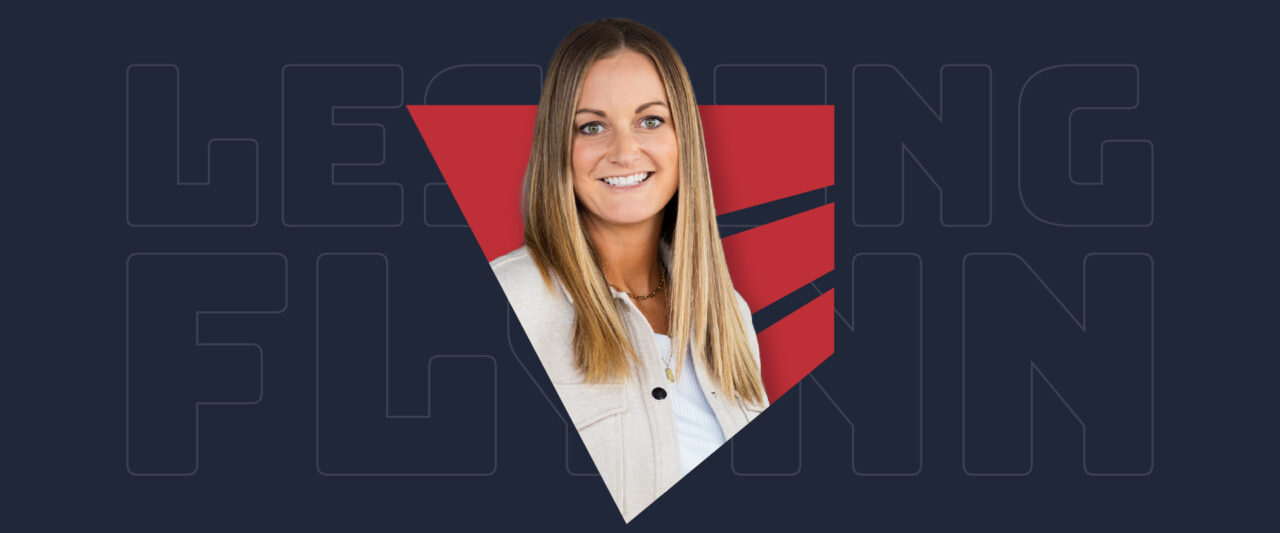Written by Jess Held, Executive Vice President & COO
On the Lessing-Flynn (LF) front desk sits an unassuming sign that reads, “We Run on EOS.” You might miss it if you’re not looking for it, but it’s important. This placard represents our commitment to the Entrepreneurial Operating System (EOS), a set of tools and guidelines that help us run our business efficiently.
Here’s an example. In EOS, there are Rocks — or the “Most Important Things” a business must accomplish to move toward its long-term goals. They’re planned (and hopefully accomplished) on a 90-day schedule to keep businesses focused. In 2023, LF leadership had a 100% Rock completion rate every quarter. (Pretty efficient, huh?)
It might sound intense to utilize an operating system to run a business. But the truth is every business runs on an operating system — whether they know it or not. However, look at the components that make up an operating system and you’ll see some familiar factors.
“[An operating system] is the way a company organizes all of its human energy. It’s the way that the people in the organization meet, solve problems, plan, prioritize, follow processes, communicate, measure, structure, clarify roles, lead, and manage.” – What the Heck is EOS?, Gino Wickman and Tom Bouwer
By relying on EOS, we have a clear structure that puts us all on the same page, working together more effectively. All while elevating our creative abilities.
Why it works
Think of EOS in terms of a children’s soccer game. We’ve all been there, watching a dozen kids on the field all chasing after the ball. You can probably count on one hand the number of goals you’ve seen scored that way. Everyone is burning energy and focused on succeeding, but the goals and strategies vary wildly (if they exist at all). This is a company without EOS.
Now think about a high school soccer game. Everyone has an assigned position on the field and knows what they need to do to help the team win. Team members are passing, communicating and no longer “swarming the ball.” That’s running on EOS.
Intentional implementation
The best part for our team is that EOS doesn’t overcomplicate strategy. It embraces the power of simplicity right from the beginning. It starts with creating a Vision/Traction Organizer (V/TO). It includes:
- Core values: A set of essential and timeless guiding principles.
- Core focus: Your ideal market.
- Niche: What you do better than anyone else.
- 10-Year-Target™, 3-Year-Picture™ and 1-Year Plan: Three essential targets that guide the business and help measure success in the short and long term.
The LF leadership team worked together to carefully plan our V/TO before introducing it to the entire agency. My only hesitation was whether our team would feel the structure was too rigid for a creative agency. To my surprise (and delight), they were excited about the change.
Why did people like EOS? Because it offered more transparency. Our V/TO is a resource we revisit together quarterly. We know what we’re working toward, how we’re planning on getting there and how each one of us can contribute.
The internal impact of EOS
I see EOS working every day in our agency. The most obvious change has been in our core values. Before EOS, we knew our values, but now I see how our team really believes in them. And it is a clear demonstration that we’re all on the same page and working together better than ever.
I could point to the physical representations of our values (Investors, Creators, Explorers and Teammates), like the magnets, wall art and t-shirts that proudly display them around the office. But the real difference now is how we lean on them day to day in our hiring practices, in our reviews and in our recognition of excellent work.
Nearly every day, I see someone congratulating a coworker for embodying the values. And on special occasions, people outside LF get to see it too — like when we were selected out of more than 700 companies in Iowa to receive the Top Workplace Values award.
The external impact of EOS
It’s not just our team that benefits from this system. Our clients benefit, too. Why? Because we’re disciplined in running our business and value accountability, just like they do. Because the EOS process to identify and solve problems helps us hone our skills to better tackle client challenges. And because it helps us maintain a talented team that works effectively and prioritizes results.
I know the longer we run EOS, the better we’ll become. And even better, these tools ensure we never have to wonder if we’re improving. We’ll have the proof.
LF Newsletter Alert
Want Lessing-Flynn to rock the socks off your inbox with insights and more?
